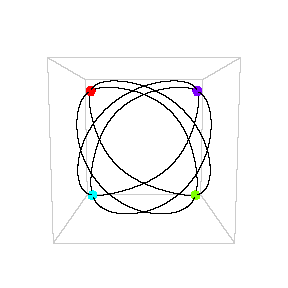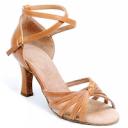What is harder than rock, or softer than water? Yet soft water hollows out hard rock. Persevere.
~ Ovid
If there is one key to creating what you want in your life, it is daily practice. When you repeat again and again, you learn so much about the habit you’re building and about yourself. There are nuances that you do not learn from a how-to guide. Such as how to persevere.
Why daily? And why action?
- DAILY! Daily moves you toward putting in hours to develop your expertise and toward repeating an activity to develop discipline and focus. Whatever your regularity is, you build your own daily practice. You can choose if your daily means 5 days a week (work week daily) or seven days a week (whole week daily) or three times a week (M-W-F regularly).
- ACTION! Action is a form of commitment. A thought can be transitory, passing. An action is you saying to the world, “I am ready and I am doing it.” An action is more powerful than a thought – by definition, Action = Thought + Activity.
But why do it? Why take regular, structured, self-scheduled daily action as opposed to acting whenever you feel like it?
| The Deep Math Example. As my very good friend and a former math professor says,
“It takes a while to get into the problem. You need to sit with it at your desk for several hours at a time just to start to focus deeply enough to be able to create any new conclusions.” It takes time to get deep enough into a subject that you are no longer skirting the surface. |
 |
| The Ballroom Dancing Teacher Example. Have you found that some people who are excellent at what they do returrn to the basics from time to time? Like a yoga teacher taking a basic refresher course. Or an author going back to the structure of his characters? I know dance teachers who regularly take beginner classes. Why? |  |
- When you are at an advanced level, you get a lot more from beginner lessons. You start to see the nuanced distinctions that you didn’t notice at the beginning – “When I ask my students to ‘rock-step’ here, some are still thinking that they are rocking when the important distinction is that they are there-and-immediately back, on their toe and immediately forward… it’s more about the forward than it is about the rock-step back.” You start to see new ways of describing something, new ways of understanding and then being able to explain a concept.
- You take the beginner class to come back to the beginner’s mind. To return to that joy that you loved about the activity to begin with, and to hear and see and feel and imagine what it is like to learn the steps for the first time. As Chip Heath and Dan Heath say in Made to Stick, we are sucked into the Curse of Knowledge: We are no longer able to often explain things to a five year old because we know too much detail. Avoid the Curse of Knowledge. Play as a beginner.
| The Twyla Tharp Creativity Example. You make space for yourself – in your head and in your heart when you practice something regularly. You make space for yourself to be creative, to focus, to live in the moment. So much of life ends up being planning and rushing that unless you make the Creative Habit as Twyla Tharp says in her book, then you don’t ever create the discipline of creativity, the space for allowing yourself to do. That space is often only possible within the constraints of time allowed for that activity. |  |
| The Alaska Hiking Example. It is through action that you create a habit, and through habits that you create the life you want to live. According to Ann Graybiel, neural pathways – i.e. the pathways that create a new habit or new behavior pattern – form when you go over them again and again. Again and again. Like a hiking trail in Alaska worn by all the footsteps repeating over the ground again and again, so a new mental pathway forms when you repeat an activity. Best results are daily. |  |
| The Guitar Example. My guitar teacher years ago said, “The most important thing in learning guitar is daily practice. Even if you play 15 or 30 minutes a day, do just that. And if you have the choice to play once for 30 minutes or twice for 15 minutes, play twice for 15 minutes.” According to him and many other musicians, the mind learns when it starts a-new – when it comes to a project a-new. So scheduling that “new” regularly allows a habit to make that deep Alaskan hiking trail pathway. |  |
And then, once you have taken the daily actions, keep track of them. Put a star on your wall calendar. Post about it on your blog. Write yourself an email accounting for that day. Track your progress. Roy Baumeister of Florida State University says (23-min interview) that one of the keys to creating a new habit is writing down those times when you have acted on that habit.
Is it really possible to achieve anything in life?
Let me ask that another way: what is harder than rock, or softer than water?
Lesson and Take-Away: 1) Take daily action and 2) write down your daily actions!
Images: math, dance, Twyla Tharp, hiking path, guitar.
| Senia Maymin, MBA, MAPP is an Executive Coach, and presents workshops to corporations about Positive Psychology. Senia is the Editor of Positive Psychology News Daily, and posts her latest ideas about positive psychology, business, and coaching at Senia.com. Senia’s bio. |